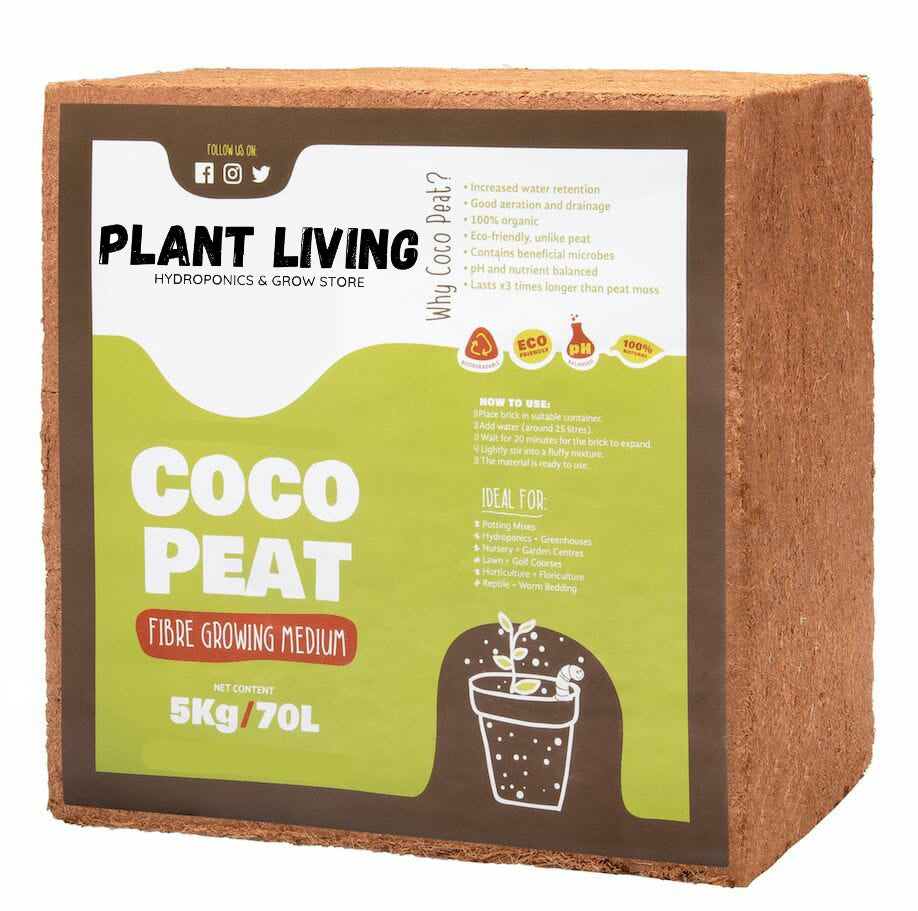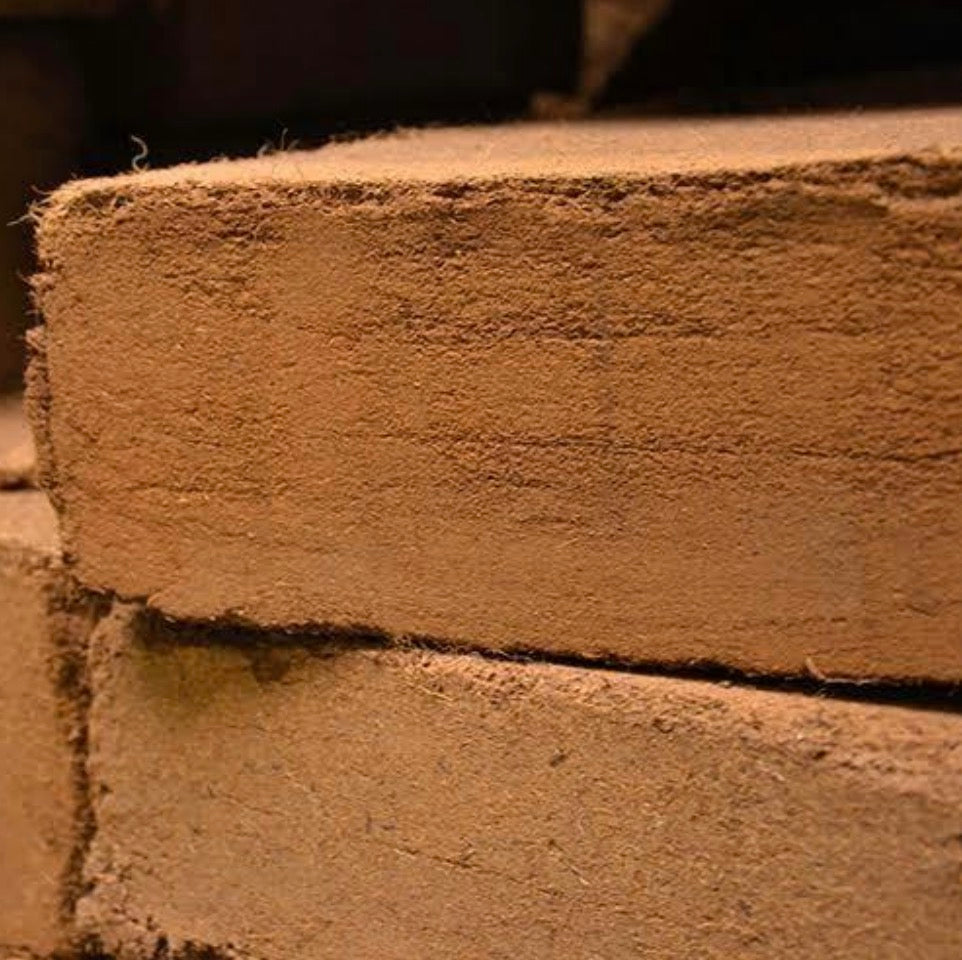100% Pure Coco Peat Block 5kg
100% Pure Coco Peat Block 5kg
Couldn't load pickup availability
100% Pure Coco Peat Block 5kgs
Please note that there will be an additional courier cost when ordering 4 blocks or more, we will send you an email with the courier quotation and an invoice once your order has been placed.
Coco Peat is derived from the coconut industry and is a 100% natural product and is used as pure substrate for different crops or in blended mixtures.
It is a favourite grow medium amongst aquaponics and hydroponics enthusiasts and commercial farmers.
The 5Kg 100% Block constitutes of fine coir fibers, which when re-hydrated inflates to around 65-75 litres of grow media. That which is not used, will dry up and can then be reused again at a later stage. It retains water well.
It increases aeration, water retention, improves soil texture, productivity and reduces root diseases!
Coco peat is a growing medium and normally used for soil amendments. It’s made from the husks of coconuts. It’s a beneficial product for plant growers and provides an alternative growing medium. It’s used much like sphagnum peat in garden applications. It increases water retention, aeration and provides antifungal benefits when used alone or incorporated into the soil as an ingredient.
Coco Peat Benefits
Peat moss is not a sustainable gardening resource. It’s a product of peatland mining, which is a hazard to environmentally sensitive swamps and bogs. Coco peat is an alternative to peat moss. Moreover, it’s better than peat moss because its superior in water retaining capacity, wettability, drainage, aeration and is also more resistant to diseases, pests, and weeds. Coco peat can be put into use in many areas such as in greenhouses, seedling nurseries, worm bedding, hydroponics (Growing medium), application in horticulture and floriculture, container gardening, etc.
How to Use Coco Peat
Coco Peat Bricks
The coconut fibers have been ground and compressed in bricks. The bricks are easy to package, market, store and handle. The product will need to be reconstituted before using.
Reconstituting the Bricks
Coconut coir or peat comes in compressed form, it expands and increases up to 5 or 6 times in volume after it’s reconstituted.
- Break apart a brick in parts and throw it in a large bucket. Add enough amount of water to saturate the brick.
- Allow the dry coco peat to sit in the water for some time so that it can become loose and absorb the water.
- Stir and fluff coco peat with a garden trowel after 10-15 minutes, add more water if it looks dry. Stop, if it’s loose.
- Stir and fluff again after a few minutes to make sure all of it has been moistened, add more water if it’s not loose yet. Once you see the moist and loose coco peat, it is ready to use in the garden.
How to Use Coco Peat In Garden
- Coco peat can be directly incorporated into the garden soil to improve water retention, aeration and decrease the risk of the soil fungus and root diseases. Mix in soil at 25/75 ratio.
- It can also be used as a mulch around garden plants to help the soil retain moisture and prevent weed growth.
How to Use Coco Peat in Pots
- Coco peat can be used as a soil-less growing medium for potted plants or in aqua-culture growing environments. Add the reconstituted bricks to planters, leaving 1 inch of space below the planter rim. Plant a seed or seedling in the center. Fertilizer and soil will need to be added to sustain a plant long-term when it’s planted in coco peat.
- If you don’t know how to use coco peat in pots–the way is to add a 1/4 part of coco peat in the potting mix.
- Container gardens dry out faster, so apply a 1-inch layer of coco peat over the container soil to help the soil retain moisture.
- Coco peat can also be as a sole growing medium for starting seeds. Once the shoots start to form you can transplant seedlings into the pots.
Share






